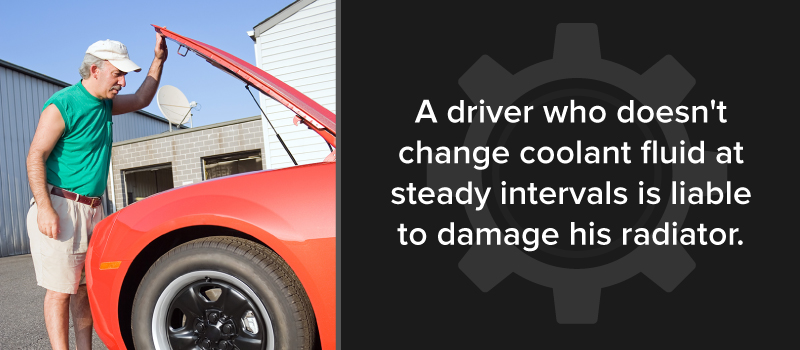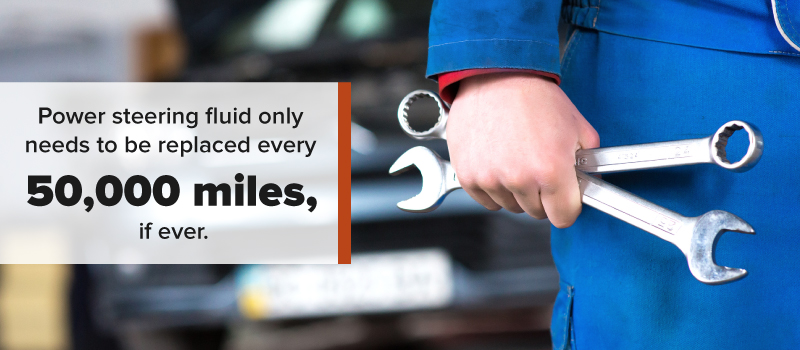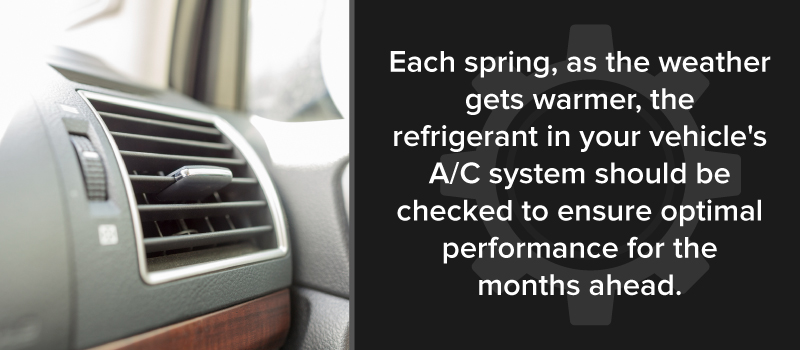7 Essential Fluids to Keep Your Car Running Smooth

Everyone knows that cars consist of many different parts, but few drivers are mindful of the fluids involved, apart from gas and oil. Thing is, most of the key components in a car, truck or van rely on their own special fluids to function properly. From the radiator and transmission to the gears and steering wheel, various engine parts and driver functions require fluids that are separate from the oil supply. As a vehicle owner, it's important to learn how to change fluids in a car. For the lubrication of your engine and gears, it's crucial to know how to check oil and transmission fluid on a monthly basis and change them as needed. Furthermore, there are other car fluids to check within the various reservoirs of your engine compartment. The following list of fluids are the most important fluids to check in a car.
#1. Engine Oil
What oil does. Oil is the lifeblood of any vehicle. It's the fluid that facilitates the movement of engine parts, and a healthy oil supply can be the difference between an operating and a non-operating car, truck or van. Therefore, it's crucial to know how to check the oil level within a tank to ensure that proper levels are maintained at all times.

How to replace oil. Drivers often wonder how to check oil themselves, and it's actually a lot easier than one might think. With the car parked and the engine shut off for at least five minutes, the oil tank can be accessed from right under the hood of your vehicle. The oil tank is near the front of the engine compartment, and it features a prominent dipstick. To check the oil level, perform the following steps:
- Pull out the dipstick and wipe it clean with a cloth.
- Reinsert the dipstick fully into the tank.
- Pull it out again to see how high the stick is covered.
The stick should have a notch that indicates the right level of oil depth. If the oil level is adequate, carry on. If the oil level is insufficient, top up or refill the tank with a suitable oil for your vehicle. Oil change frequency. It's important to check the oil level once per month. In general, the oil should be changed every six months or 3,000 miles whichever comes first. On newer vehicles, however, it's also wise to check the owner's manual to see if more specific timeframes apply. Consequences of not changing oil. The moving parts that comprise the engine of a motor vehicle need oil in order to move, pure and simple. Without oil, metals end up rubbing against one another and causing friction, which can lead to a host of problems. The friction between metals leads to wear, excess heat and erosion. Within a short period of time, this can have a domino effect across neighboring components.

Due to the complex, heavy-duty mechanisms of a vehicle engine, the problems caused by a lack of oil manifest almost immediately. That's why emergency lights come on when oil levels are depleted. When you see that light, pull over and top off the tank immediately. Oil leak warning. If you find yourself topping off your oil more frequently than before, there's likely a leak in the oil tank. In this case, top-offs are a short-term remedy to a bigger problem that will only get worse and costlier the longer you put things off. If oil is leaking from your vehicle, have the engine serviced as soon as possible.
#2. Transmission Fluid
What transmission fluid does. Transmission fluid lubricates the transmission in your vehicle. This, in turn, keeps the gears running properly from first gear to second gear and on up to fourth gear or fifth, depending on the make and model of your vehicle. Basically, transmission fluid allows your wheels to adopt to speed levels as they accelerate between residential lanes and town/city thoroughfares. How to replace transmission fluid. Not many drivers know how to check transmission fluid because, truth be told, it rarely needs to be replaced. As with the oil tank, the transmission fluid reservoir has a dipstick. Unlike with oil changes, however, the motor should be idling when you check the transmission fluid. Checking transmission fluid is much the same as checking oil:
- Pull out the dipstick and wipe it clean.
- Reinsert the dipstick.
- Pull it out and check the fluid level.
When checking the transmission fluid, also inspect the quality. Good transmission fluid should be clear, pink or red. If the fluid is brown, smells burnt, or contains particles, it's time to change the fluid.

Transmission fluid replacement frequency. For practical purposes, the transmission fluid should be inspected on a monthly basis during routine inspections of the engine compartment. However, transmission fluid only needs to be changed every 50,000 to 100,000 miles it all depends on the type of car. Consequences of insufficient transmission fluid. Gears are essential to the operation of your vehicle because they allow you to accelerate from slow to fast and back. As you go from 10 miles per hour to 20, 30, 40, and on up into the 50s, each shift triggers a change of the rotational axis that allows your car to go faster and faster. As you slow down, your car does the whole thing in reverse. While these functions are essential to the speed of your vehicle, they wouldn't be possible without transmission fluid, which keeps this whole system functioning during each stage of your daily commute.
#3. Coolant
What coolant does. Coolant aka radiator fluid or antifreeze is the fluid in your radiator that prevents your car from overheating. The components in your engine compartment heat up rapidly during a commute of significant length. Whether you drive across town, across the country or merely to the nearby supermarket, your car, truck or van will overheat and fail within minutes without coolant to keep the engine cool.

How to replace coolant. The radiator cap is usually at the front or center of the engine compartment. To check the coolant, remove the cap to the radiator and check the fluid inside. Under most caps, there's a line that indicates the needed coolant level. If the coolant supply is under the line, top it off but make sure that any new coolant you put into the vehicle matches the kind that's currently in the radiator. Coolant replacement frequency. Coolant should be checked twice annually, preferably at the start of the summer and winter seasons. Every two to three years, coolant should be replaced outright. Coolant is best checked when a car has recently been active, as opposed to parked in a garage for several days or weeks. However, the radiator should not be touched when the engine is hot or idling. Therefore, the most suitable time to change coolant fluid is roughly one hour after a car has last been driven. Consequences of insufficient coolant. The engine of a car, van or truck can get really hot, really fast regardless of whether you're going down the highway at 55 mph or cruising through your neighborhood at a leisurely 15. Consequently, an engine could easily overheat without sufficient coolant. If you don't check the radiator at regular intervals and change coolant fluid as needed, you might end up marooned in the middle of nowhere.

Aside from the physical risks of potentially winding up stranded, a driver who doesn't change coolant fluid at steady intervals is liable to damage his radiator and wind up with a much more expensive set of problems. For example, when a radiator fails, the damage can spread to the thermostat, water pump and heater core. Therefore, if smoke suddenly oozes from the hood of your vehicle, chances are good your car is overheating due to issues with the coolant, in which case it's definitely time for radiator fluid replacement.
#4. Brake Fluid
What brake fluid does. Brake fluid is one of the most vital fluids for your safety as a driver. That said, brake fluid only needs to be replaced by you, the driver, in rare circumstances. Since the fluid is part of a closed system, it rarely runs low. However, in the event that your brakes do seem slightly off, the brake fluid should be the first suspect. How to inspect brake fluid. The brake fluid reservoir can be found on the driver's side, near the back of your engine. Since the reservoir is translucent, you can inspect the level and quality of the brake fluid without opening the reservoir. The quality of the brake fluid is usually the indicator as to whether new fluid is needed. If the fluid is golden in color, it's healthy but if the fluid is of a darker brownish hue, it needs to be replaced. How to replace brake fluid. To replace or top-off the brake fluid yourself, remove the cap and pour with matching fluid. Fill to about half an inch below the cap. On some cars, the cap is held into place by a clamp, and you might need to use a screwdriver to pry this open. Brake fluid replacement frequency. Brake fluid should be checked every time you change your oil, or once each month whichever is more frequent. Regardless of quality, brake fluid should be changed out every two years.

Consequences of insufficient brake fluid. When you drive at high speeds along highways, the most dangerous thing that could happen with your vehicle is brake failure. The same is true when you're coming down off-ramps from bridges and freeways, and even when you're approaching stop lights and traffic backups on city thoroughfares. Simply put, braking mechanisms must be ready to activate at all moments while a vehicle is active. Drivers who aren't checking brake fluid on a routine basis run the risk of sudden brake failures, followed by potentially devastating accidents. Therefore, it's crucial to learn how to check brake fluid and do so during each inspection of your engine compartment.
#5. Power Steering Fluid
What power steering fluid does. Power steering fluid makes it easy to turn your steering wheel when driving. This, in turn, is largely responsible for the comfort and ease of your driving experience. Without power steering fluid, the steering wheel gets stiff, which makes it difficult to turn at intersections or pull out of driveways or parallel parking spots. When the power steering fluid falls to an insufficient level, your steering system might make creaking noises. The good news is that power steering fluid rarely falls below sufficient levels. Therefore, if the reservoir does in fact get depleted, it would likely be due to a leak. How to inspect power steering fluid. As with the brake fluid, power steering fluid is contained in a translucent reservoir. Therefore, the fluid can be inspected visually from the outside by simply popping the hood of the vehicle. The reservoir is found near the belts on the passenger side of the engine compartment in most vehicles. Before popping the cap, clean the outside area with a cloth to make sure no dirt falls inside the reservoir. Power steering fluid replacement frequency. Power steering fluid should be checked monthly as part of any routine inspection of the engine compartment. However, power steering fluid only needs to be replaced every 50,000 miles, if ever. Check the owner's manual of your make and model for specific information on whether the power steering fluid ever needs to be flushed.

Consequences of insufficient power steering fluid. When operating a motor vehicle, there's nothing more limiting than a wheel that can barely turn. The reason why the Club is an effective anti-theft device is not because it prevents thieves from hotwiring automobiles, but because it prevents thieves from turning a steering wheel more than a couple inches. When you can barely turn a steering wheel, it's impossible to pull out of parking spaces, let alone turn at intersections or even change lanes. Even though a wheel can still turn without power steering, doing so becomes an athletic exercise. In fact, once you're used to power steering, going back is often too much of a physical strain to bear, especially among older drivers. Therefore, it's important to have an optimal supply of power steering fluid in your car, truck or van at all times.
#6. Air Conditioning Refrigerant
What A/C refrigerant does. Refrigerant or Freon is what keeps your A/C system working during the warmer months of the year. As the element that gives incoming ambient air its icy effect, refrigerant makes long commutes in the sweltering heat bearable for most drivers. In a sense, refrigerant is the coolant for your passenger compartment. How to inspect A/C refrigerant. In order to check the system, you'll need a compatible thermometer and A/C gauge. If the refrigerant is indeed low, you'll need to invest in supplies to recharge the system. Though it can be tricky to inspect the A/C system yourself, it's a worthwhile skill considering all the money that can be saved in the process. A/C refrigerant replacement frequency. Each spring, as the weather gets warmer, the refrigerant in your vehicle's A/C system should be checked to ensure optimal performance for the months ahead. Though you might never need to actually replace the refrigerant during the time you own a particular vehicle, it's still important to know what to do in the event of A/C failure.

Consequences of insufficient refrigerant fluid. In the summertime, driving conditions can get incredibly humid in most parts of the country. In the southern parts of the U.S., it can be virtually impossible to endure July and August commutes without a functioning air conditioner in your car or van. Even in once-cool cities like Portland and Seattle where summertime heat waves have become an annual occurrence A/C systems have become an essential part of vehicles for today's drivers. Basically, if you live in any part of the U.S., you need to ensure that the A/C system in your car, truck or van will work for the months ahead at the start of each warm cycle.
#7. Washer Fluid
What washer fluid does. As every driver knows, washer fluid is one of the pleasures of vehicle operation. Washer fluid keeps windshields clean on dry days of the year. During the months that see no rain, washer fluid is useful every time the windshield gets dirty. Since the release of washer fluid is triggered by hand from the driver seat, it's the one fluid in a vehicle that's actually regulated by the driver. How to inspect washer fluid. In most vehicles, washer fluid is stored in a fluid tank at the back of the engine compartment. Fluid tanks are generally translucent and marked, so it's easy to check the fluid level without pulling off the cap. If the fluid level is low, fill it up with an actual windshield fluid. Don't settle for homemade soap and water formulas, as these lack the agents necessary for handling road dirt and bugs. Washer fluid replacement frequency. Unlike other fluids in a car, truck or van, washer fluid doesn't degrade over time. Therefore, the frequency at which your fluid should be replaced could all depend on how often you use the windshield wipers. This, in turn, will largely depend on the level of road dirt exposure your vehicle endures on average. Basically, washer fluid should be refilled when it runs low. Washer fluid levels should be checked during each monthly inspection of your engine compartment. Consequences of insufficient washer fluid. Though it's not one of the vital fluids for the operation of your engine, washer fluid plays an important role in the comfort and safety of your driving experience. After all, a progressively dirty windshield can be quite a nuisance during commutes throughout the dry days of the year and potentially interfere with your vision. Thankfully, washer fluid is perhaps the easiest of car fluids for even the most casual driver to understand, because it's the one fluid whose function is readily clear to the naked eye. Therefore, noticing when washer fluid is low requires no special knowledge of vehicle mechanics. A low fluid level is among the easiest problems to rectify.
Check Car Fluids Regularly and Change as Needed
As you can see, there are seven car fluids to check in the average vehicle. While some of the fluids to check in a car, truck or van need to be inspected and changed more often, each fluid should be checked during routine inspections of an engine compartment.

However, when you change fluids in a car or any other type of vehicle, you need to be equipped with a cleaning towel, a flashlight depending on the time of day and the right type of fluids for your engine parts. Hopefully, you can now feel more confident about how to check oil and transmission fluid, how to handle radiator fluid replacement, how to check brake fluid and even how to change coolant fluid. When the time comes to check oil level points within your engine, you'll be able to handle the task easily, in a matter of minutes, and then get on with your day. Even when it comes to rarer tasks, like checking brake fluid, the task should be relatively easy, since all fluid checks are a matter of popping the engine, finding the reservoir, inspecting the fluid level and topping off or replacing the fluid as needed. For more guidance into the world of automotive maintenance, browse our selection of engine repair books to take your gearhead cred to the next level!



